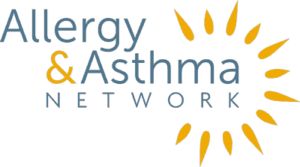Join us on Sept. 24 when Dr. Ruchi Gupta will discuss racial/ethnic differences in food allergy prevalence, outcomes, care and management.
Food Allergy
Back to School with Allergies and Asthma – COVID-19 Edition
Learn how to prepare students with allergies and asthma for school, with the latest information regarding COVID-19 issues for schools and students.
Ask the Allergist: The Food Allergy-Eczema Connection
Allergist Allison Ramsey answers the question: What is the connection between food allergies and eczema (atopic dermatitis), especially in young children?
Is Pet Food a Food Allergy Risk?
Some pet foods contain allergens that can be transferred to people by pet saliva or direct ingestion by infants and toddlers. Here are ways to stay safe.
Ask the Allergist: Why Food Allergy Immunotherapy?
Dr. Douglas Jones responds to the Ask the Allergist question: what questions should patients and parents ask about undergoing food allergy immunotherapy?
5 Things to Know about Anaphylaxis in the School Setting
This webinar was originally recorded in April 2020. Webinar Objectives: At the end of the learning...
The Latest in Food Allergy Diagnosis
Learn about the latest in food allergy diagnosis and testing from allergist Jay Lieberman. Includes an update on the accuracy of food allergy tests.
Coffee, Cross Contact and Food Allergies
By Allie Bahn If you are a coffee drinker and you have food allergies, a simple cup of joe can be...
Why Chef Cards are Important for People With Food Allergies
Find out about the benefits of using a chef card to dine out with food allergies, and download a template to print and use.
FDA Gives OK to Peanut Allergy Oral Immunotherapy
News and information about the approval for use of Palforzia, the first approved treatment for peanut allergy: Learn how it works and how it is prescribed.
Babysitters, Playdates and Food Allergies: A Matter of Trust
Information you can use to educate and build trust with babysitters, caregivers and parents hosting playdates when you have a child with food allergies.
American Airlines is Stocking Auvi-Q in Medical Kits
The Network continues to advocate for airlines to stock epinephrine auto-injectors in emergency medical kits for the treatment of anaphylaxis.
All About
Food allergies affect 32 million people in the United States, including 13% of children. They occur when the body’s immune system perceives a threat from proteins in food and overreacts to neutralize it. If you have a family history of food allergies, asthma, eczema or pollen allergies, you may be at higher risk for developing food allergy. Food allergies should not be confused with intolerance to food; food allergies can be life-threatening. The most common food allergens are peanut, milk, egg, tree nuts, wheat, soy, sesame, fish and shellfish.
Food allergies require vigilance, especially for children. Small children need careful supervision as they are likely to put any food or object into their mouth; even food left out for a pet can have allergens like dairy, wheat, soy, peanuts, egg or shellfish. Children with severe allergies need to have an emergency plan in place for daycare, school and friends’ homes. Medication and permission forms to administer it, prescriptions, and meetings to discuss accommodations and care should be in place anywhere children are out of their parents’ care.
Up to 30% of eczema patients will develop reactions to certain foods, including gastrointestinal distress, respiratory symptoms like wheezing, difficulty breathing or anaphylaxis, or skin reactions like itching, swelling, and hives. Sometimes eliminating foods from a patient’s diet can improve eczema symptoms, so working with an allergist is key. Skin tests, blood tests and oral food challenges can help identify food allergens. Immunotherapy is emerging as a treatment option for certain food allergens.
People with food allergies need to use caution when dining out. Even getting coffee can pose a risk of cross-contamination with milk and its alternatives. Keeping your order as simple as possible and communicating about the risks you face are all key. Personal “chef cards” that list allergens and severity of reactions, and the need for vigilance in the kitchen to avoid cross-contamination, are recommended when dining out. Chef cards provide the staff with a visual cue to remember the information and avoid potentially fatal mistakes.










